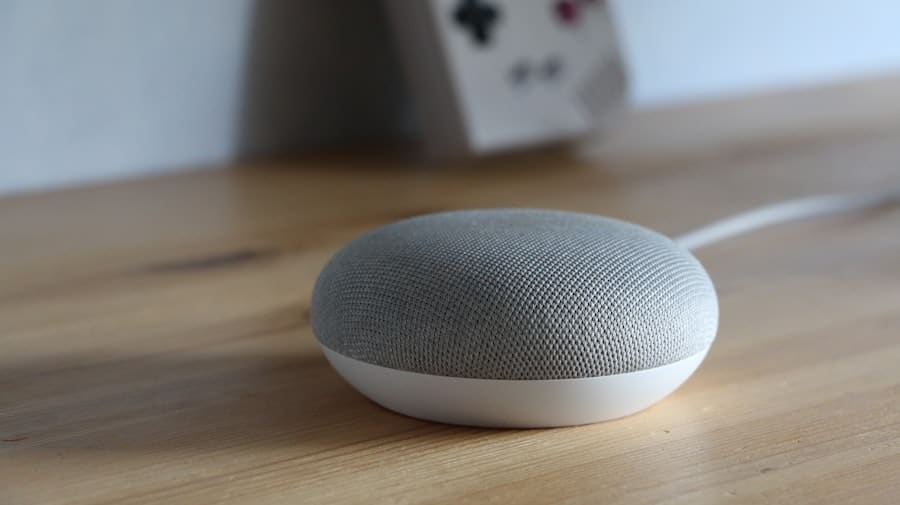In an era where technology permeates every aspect of our lives, smart homes have emerged as a beacon of convenience and security. Smart home emergency protocols are essential frameworks designed to ensure safety and rapid response during crises. These protocols encompass a range of automated actions and notifications that can be triggered by various emergency situations, such as fires, intrusions, or medical emergencies.
The integration of smart devices—like smoke detectors, security cameras, and smart locks—into a cohesive system allows homeowners to manage their safety more effectively than ever before. The significance of these protocols cannot be overstated. As homes become increasingly interconnected through the Internet of Things (IoT), the potential for rapid response to emergencies grows exponentially.
Smart home emergency protocols not only enhance personal safety but also provide peace of mind for families. By leveraging technology, homeowners can create a responsive environment that reacts to threats in real-time, ensuring that help is always just a command away. This article delves into the intricate relationship between artificial intelligence (AI) and smart home emergency protocols, exploring how AI enhances the effectiveness of these systems.
Key Takeaways
- Smart home emergency protocols are essential for ensuring the safety and security of residents in the event of an emergency.
- AI plays a crucial role in smart home management by automating tasks, analyzing data, and making real-time decisions to enhance safety and security.
- AI has the ability to detect and respond to emergency situations such as fires, break-ins, and medical emergencies by analyzing patterns and anomalies in data.
- Coordinating emergency protocols with AI technology can streamline response times and provide more efficient and effective assistance to residents.
- Integrating AI with smart home security systems can enhance the overall safety and security of the home by providing advanced monitoring and threat detection capabilities.
Understanding the Role of AI in Smart Home Management
Artificial intelligence serves as the backbone of modern smart home management, enabling devices to learn from user behavior and adapt to individual preferences. At its core, AI processes vast amounts of data collected from various sensors and devices within the home, allowing for intelligent decision-making. For instance, AI algorithms can analyze patterns in energy usage, detect anomalies, and optimize the operation of appliances to enhance efficiency.
This capability extends beyond mere convenience; it plays a crucial role in emergency preparedness and response. AI’s role in smart home management is multifaceted.
By integrating machine learning algorithms, smart home systems can identify potential threats based on historical data and real-time inputs. For example, an AI-enabled security camera can distinguish between familiar faces and unknown individuals, alerting homeowners to potential intruders. This proactive approach to security is vital in developing effective emergency protocols that can be activated at a moment’s notice.
AI’s Ability to Detect and Respond to Emergency Situations

One of the most compelling advantages of AI in smart homes is its ability to detect emergencies swiftly and accurately. Advanced sensors equipped with AI capabilities can monitor environmental conditions continuously, identifying signs of danger such as smoke, carbon monoxide, or unusual temperature fluctuations. For instance, a smart smoke detector can differentiate between cooking smoke and actual fire, reducing false alarms while ensuring that genuine threats are addressed immediately.
Moreover, AI systems can respond to emergencies autonomously. In the event of a fire, for example, an AI-driven smart home can initiate a series of pre-programmed actions: unlocking doors for easy exit, turning on lights to illuminate escape routes, and even contacting emergency services without human intervention. This level of responsiveness is critical in high-stress situations where every second counts.
The ability to act quickly not only mitigates damage but also enhances the safety of all occupants within the home.
Coordinating Emergency Protocols with AI Technology
The coordination of emergency protocols through AI technology involves creating a seamless integration between various smart devices and systems within the home. This coordination ensures that when one device detects an emergency, it triggers a chain reaction among other connected devices. For example, if a water leak is detected by a smart sensor, the system can automatically shut off the main water supply while sending alerts to the homeowner’s smartphone and activating a connected sump pump if necessary.
Furthermore, this coordination extends beyond immediate responses; it also encompasses communication with external entities such as emergency services or family members. AI can facilitate this communication by sending alerts with precise information about the nature of the emergency and the location within the home. This level of integration not only streamlines responses but also ensures that all relevant parties are informed and prepared to act accordingly.
Integrating AI with Smart Home Security Systems
The integration of AI with smart home security systems represents a significant advancement in residential safety measures. Traditional security systems often rely on passive monitoring, alerting homeowners only after an incident has occurred. In contrast, AI-enhanced security systems actively analyze data from cameras, motion detectors, and other sensors to identify potential threats before they escalate into emergencies.
For instance, an AI-powered security camera can utilize facial recognition technology to identify known individuals entering the property while flagging unknown faces for further scrutiny. This proactive monitoring allows homeowners to receive alerts about suspicious activity in real-time, enabling them to take preventive measures before a situation escalates. Additionally, these systems can learn from user interactions and adapt their monitoring strategies over time, becoming increasingly effective at identifying genuine threats.
The Importance of AI in Providing Real-time Alerts and Notifications

Real-time alerts and notifications are critical components of any effective emergency protocol within a smart home environment. AI plays a pivotal role in ensuring that these alerts are timely and relevant. By continuously monitoring various sensors and devices, AI systems can detect anomalies and trigger alerts almost instantaneously.
For example, if a smoke detector senses smoke in the kitchen while the homeowner is away, the system can send an immediate notification to their smartphone along with live video feeds from security cameras. Moreover, the sophistication of AI allows for context-aware notifications that provide users with actionable information. Instead of generic alerts that may cause unnecessary panic, AI can tailor messages based on the specific situation at hand.
For instance, if a water leak is detected in the basement, the notification could include instructions on how to mitigate damage while also alerting emergency plumbing services if needed. This level of detail empowers homeowners to respond effectively during emergencies.
AI’s Role in Contacting Emergency Services and Providing Assistance
In critical situations where human intervention is necessary, AI can facilitate communication with emergency services seamlessly. Many smart home systems are equipped with features that allow them to automatically contact local authorities when certain thresholds are met—such as smoke detection or unauthorized entry into the home. This capability ensures that help is dispatched promptly without requiring the homeowner to take additional steps during high-stress situations.
For example, if a medical alert system detects that an elderly resident has fallen and is unresponsive, it can relay crucial data such as the individual’s medical history or specific health conditions directly to paramedics en route. This information can significantly enhance the quality of care provided upon arrival and streamline the response process.
Future Developments and Innovations in AI for Smart Home Emergency Protocols
As technology continues to evolve at an unprecedented pace, the future of AI in smart home emergency protocols holds immense promise. Innovations such as advanced predictive analytics could enable systems to anticipate emergencies before they occur by analyzing patterns in user behavior and environmental conditions. For instance, if an AI system detects that a homeowner frequently leaves appliances running unattended during certain hours, it could proactively suggest turning them off or even automate this action.
Furthermore, advancements in natural language processing may lead to more intuitive interactions between homeowners and their smart systems. Imagine being able to communicate with your home using natural language commands during an emergency—asking it to lock doors or call for help without needing to navigate complex interfaces or apps. Such developments would enhance user experience while ensuring that critical actions are taken swiftly.
The integration of AI with emerging technologies like augmented reality (AR) could also revolutionize how homeowners manage emergencies. AR could provide visual overlays on real-world environments through smart glasses or mobile devices, guiding users through evacuation routes or showing them where safety equipment is located within their homes. In conclusion, as we look ahead, it is clear that AI will play an increasingly central role in shaping smart home emergency protocols.
The combination of real-time data analysis, proactive threat detection, and seamless communication with emergency services will create safer living environments for families everywhere. The ongoing innovations in this field promise not only enhanced security but also greater peace of mind for homeowners navigating an ever-evolving technological landscape.
In a related article, The Ultimate Guide to the Best Lighting Design Software of 2023, explores the latest advancements in lighting design technology. This article delves into the various software options available for creating innovative and efficient lighting designs for homes, offices, and other spaces. As smart home technology continues to evolve, integrating lighting design software with AI capabilities can further enhance the overall functionality and aesthetics of a smart home system.
FAQs
What is the role of AI in coordinating smart home emergency protocols?
AI plays a crucial role in coordinating smart home emergency protocols by analyzing data from various sensors and devices to detect potential emergencies, such as fires, gas leaks, or intrusions. It can then automatically trigger appropriate responses, such as alerting the homeowner, contacting emergency services, or activating safety systems.
How does AI help in improving response time during emergencies in smart homes?
AI can help improve response time during emergencies in smart homes by quickly analyzing and identifying potential threats, allowing for immediate action to be taken. This can include notifying the homeowner, contacting emergency services, or activating safety measures, all of which can significantly reduce the time it takes to address the emergency.
What are some examples of AI-powered devices that can coordinate smart home emergency protocols?
Examples of AI-powered devices that can coordinate smart home emergency protocols include smart smoke detectors, carbon monoxide detectors, security cameras, and smart locks. These devices use AI to analyze data and detect potential emergencies, allowing for swift and automated responses to mitigate the situation.
How does AI contribute to the overall safety and security of smart homes?
AI contributes to the overall safety and security of smart homes by continuously monitoring and analyzing data from various sensors and devices to detect potential threats. This proactive approach allows for immediate responses to emergencies, ultimately enhancing the safety and security of the home and its occupants.
What are the potential benefits of using AI to coordinate smart home emergency protocols?
The potential benefits of using AI to coordinate smart home emergency protocols include faster response times, reduced risk of property damage, enhanced safety for occupants, and peace of mind for homeowners. Additionally, AI can help optimize emergency responses by providing relevant information to emergency services, ultimately saving lives and minimizing the impact of emergencies.

